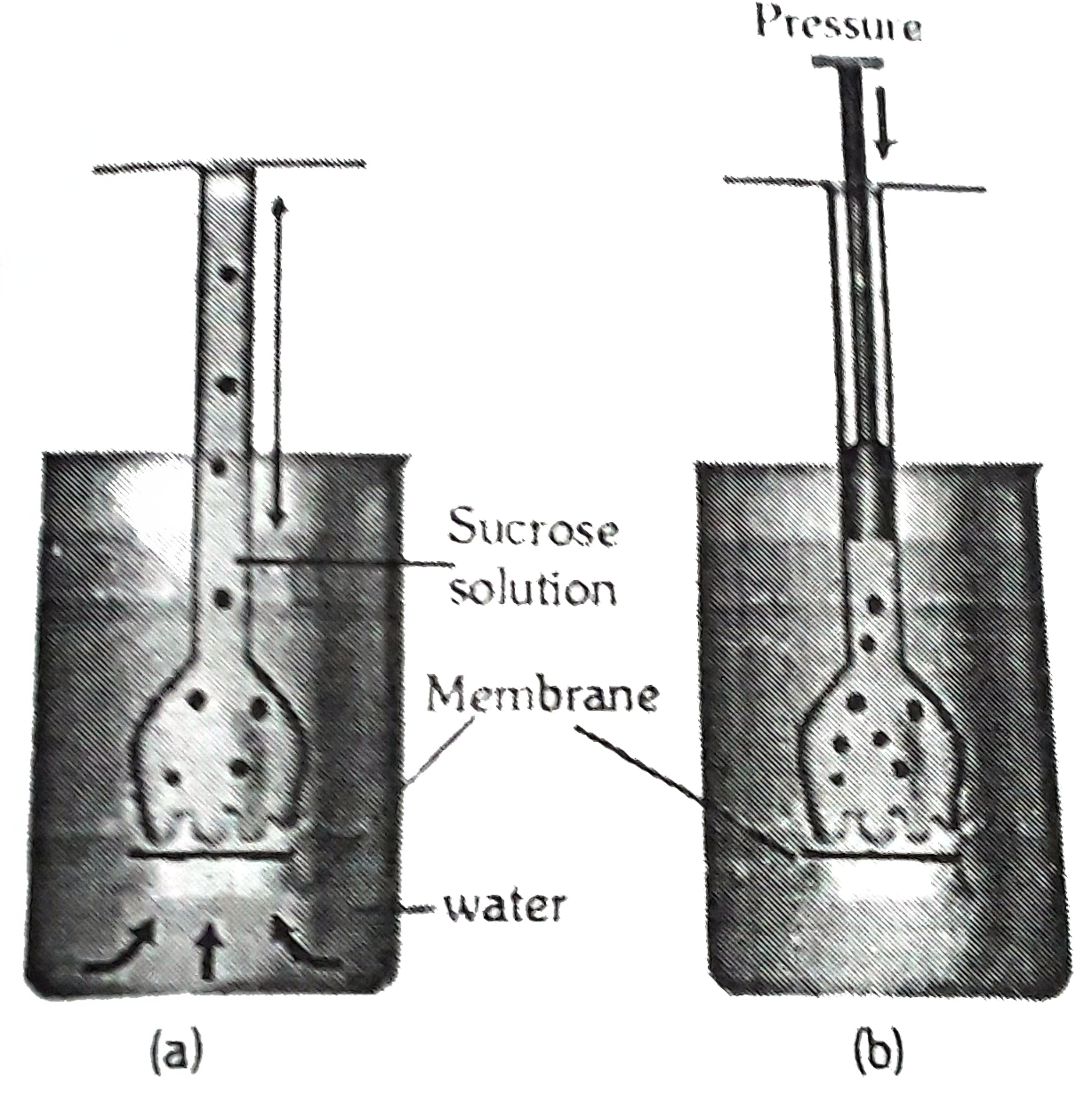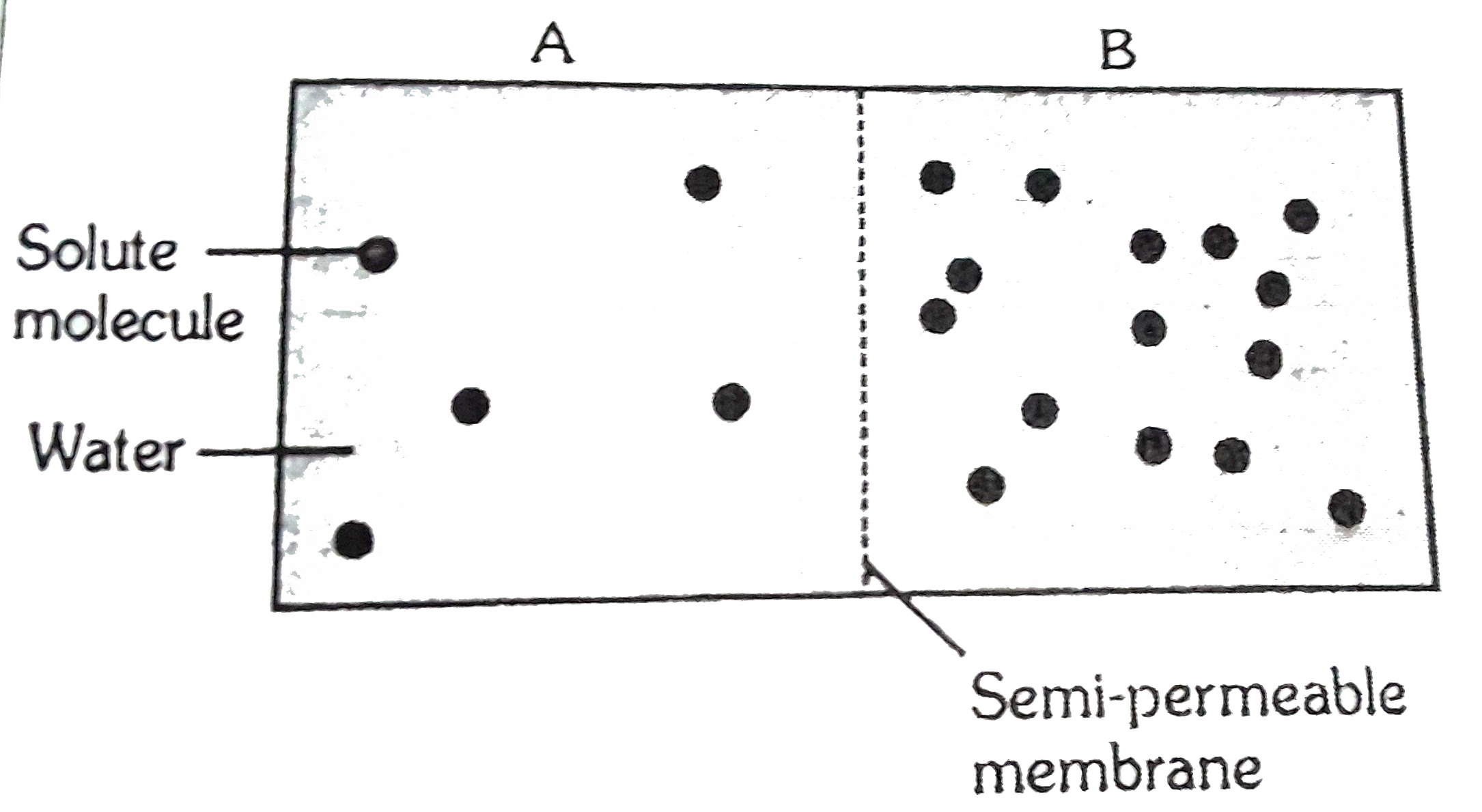
Study the given figure carefully and select the true and false statement(s) in this demonstration.
(a) Numerically this external pressure in figure (b) is equivalent to the osmotic potential of a solution, but the sign is opposite.
(b) Osmotic pressure is due to the solute concentration.
The correct Answer is:(a) True
(b) True
Step by step video, text & image solution for Study the given figure carefully and select the true and false statement(s) in this demonstration. (a) Numerically this external pressure in figure (b) is equivalent to the osmotic potential of a solution, but the sign is opposite. (b) Osmotic pressure is due to the solute concentration. by Biology experts to help you in doubts & scoring excellent marks in Class 12 exams.
Similar Questions
Study the given figure carefully and select the true and false:- statement(s) regarding it.

(a) Solution of chamber B has a lower water potential.
(b) Solutio of chamber A has a lower solute potential
(c). Osmosis occurs from chamber A to B.
(d) Solution f cham ber B has higher solute potential.
(e) At equlibrium both chambers have equal water potential.
(f) If one chamber has a Ψ of -2000 kPa and the other -1000kPa then chamber with Ψ of -1000 kPa has the highger ΨView SolutionThe properties of dilute or ideal soltions which depend only upon the concerntration of the solute in the solution and to other characteristics are known as colligative properties. There are in all four such properties i.e., relative lowering in vap[our pressure, osmotic pressure, elevation in boiling point tmperature and depression in freezing point temperature. All of them them in calculating the observed molar mass of the solute which is inversely propertional to the coligative property involved. Out of these, osmotic pressure may be regarded as the best for the determination of molecular mass of the solute. According to Van't Hoff theory of dilute solution. π=CRT, where π is the osmotic pressure while C is the molar concentration of the solution.
(8) When liquids A and B are mixed, hydrogen bonding occure. The solution will show.View Solution
Knowledge Check
- Question 1 - Select One
The solution A has a higher osmotic pressure than the solution B :
ASolution A is hypertonic to solution B.BSolution A is hypotonic to solution B.CSolution A is isotonic to solution B.DSolution B is hypertonic to solution A - Question 2 - Select One
If the molar concentration of the given sugar solution is 0.3 M, find out the osmotic pressure of this solution
A6.72 atmB67.2 atmC2.24 atmD5.60 atm - Question 3 - Select One
Read the following statements and choose the correct option. (A) Osmotic pressure is equivalent to the osmotic potential but the sign is opposite. (B) During plasmolysis water is first lost from the vacuole then from the cytoplasm. (C) The process of plasmolysis is usually reversible
AOnly A is correctBOnly B is incorrectCBoth B and C are correctDBoth A and B are correct
At low concentration the statement that equimolal solutions under a given set of experiment conditions have equal osmotic pressure is true for
View SolutionAt low concentrations, the statement that equimoala solutions under a given set of experimental conditions have equal osmotic pressure is true for
View SolutionAt a given temperature, osmotic pressure of a concentrated solution of a substance __
View SolutionAt low concentrations, the statement that equimolal solutions under a given set of experimental conditions have equal osmotic pressure is true for
View SolutionAt low concentrations, the statement that equimolal solutions under a given set of experimental conditions have equal osmotic pressures is true for
View Solution

